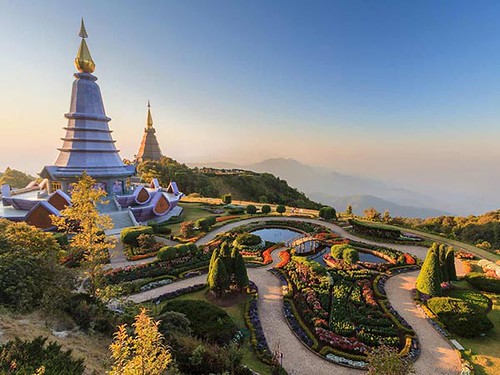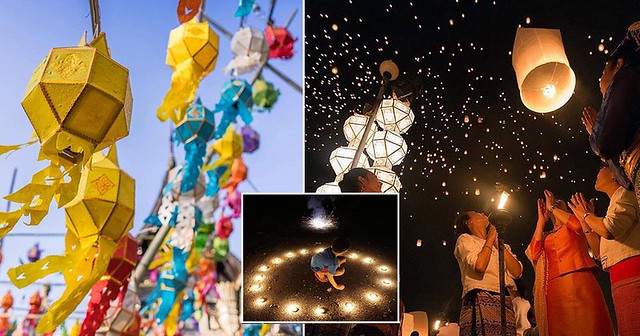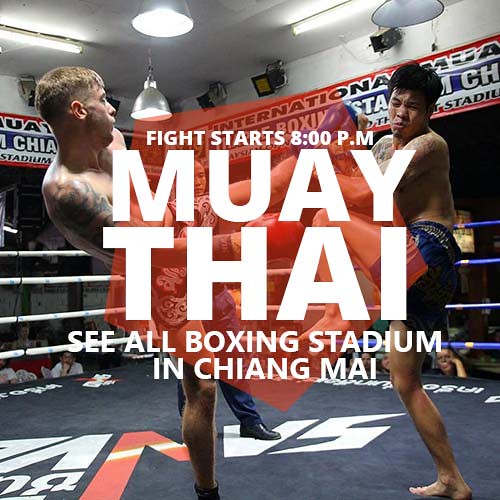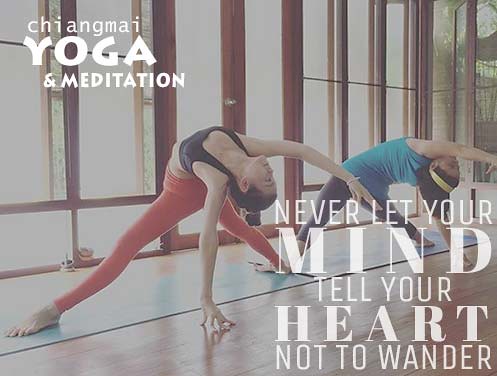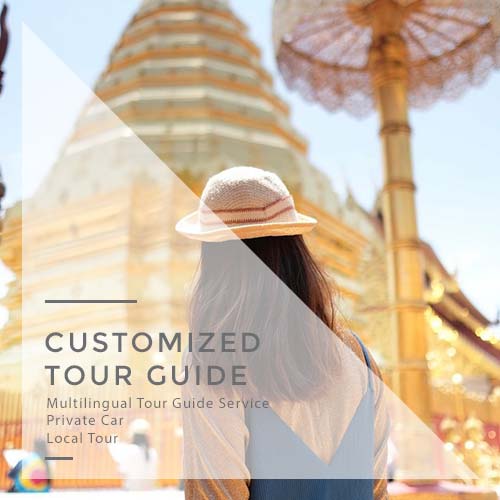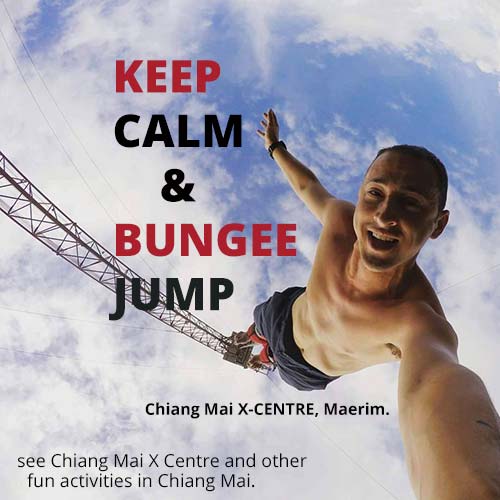
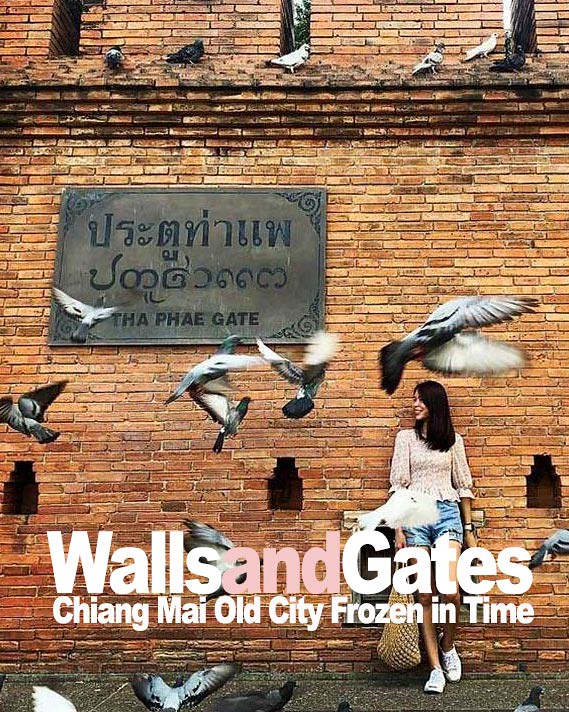
THA PHAE GATE – Chiang Mai Old City Walls and Gates
THA PHAE GATE is one of the most famous landmarks in Chiang Mai. Located on the eastern side of the wall, it is one of the gates to enter the Old City. The other gates are Chang Phuak Gate, Chiang Mai Gate, Suan Dok Gate, and Saen Pung Gate.
The OLD CITY is the town centre of Chiang Mai. It has a long and fascinating history, stretching back to when the province acted as the capital of the Lanna Kingdom from the 13th-18 century.
When Chiang Mai was founded in 1296 by King Mangrai, the city was built with a shape that resembles a square bounded by the walls and a moat. The purpose was to protect the city from any invasion from their neighbour Thai and Burmese Kingdoms.
Today, after more than 700 years of growth and expansion, the physical, historical and cultural uniqueness of the city is still in evidence: the moats, walls, gates, the 40 ancient temples within the city walls, and hundreds more outside, together with the marketplaces, and the different communities of diverse ethnic groups and cultures.

If you look at Chiang Mai city map, you will see that the city lies on the square area, called Chiang Mai Old City.

The city moat, the four city gates and defensive walls still form a distinctive romantic feature, adorned with beautiful fountains and flowers.
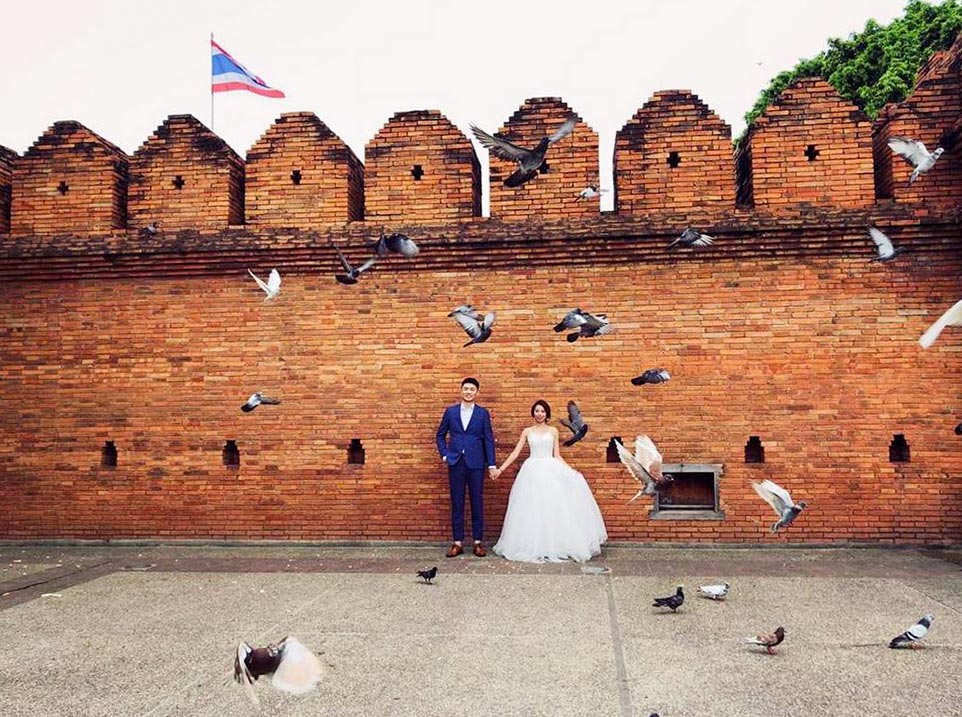
Chiang Mai is a city where the old and new world coexists flawlessly.
Over the different historical periods and in modern time, the wall, adjacent moat, and several large gates have been rebuilt and renovated in parts with modern bricks.
The ancient sites, monuments, and Buddhist temples have been restored and refurbished so that they would function as a living heritage that continues to serve its surrounding communities in many traditional ways.
Today, though congested by modern urbanization and overwhelmed by exuberant modern activities, Chiang Mai’s historical sites and monuments are well safeguarded and serve as the host for many cultural events and festival celebrations.
From lantern-lighting during Loy Krathong, to water-fights at Songkran, the Flower Festivals and regular live music and cultural activities throughout the year.

Chiang Mai City Art & Cultural Centre standing behind the Three Kings Monument, right at the centre of the Old City, built in 1924.

Chiang Mai Old City is the site for many cultural events and festivals celebrations. Among them is the annual Chiang Mai Flower Festival in February.
THA PHAE GATE (West)

There is a main gateway to enter the city at each side of the crumbling wall, which also often used as the landmark when referring to a specific place or direction in the surrounding areas.
Tha Phae Gate, located on the east side of the city wall, is the most famous of all. Historically, it was the main gate through which monks, traders, and diplomats went to enter Chiang Mai.
Today, the area is surrounded by many hotels, restaurants, cafes etc, and close to many attractions like the Night Bazaar, and the Sunday Night Market Walking Street.
Tha Phae Gate is like the city square of Chiang Mai. The big open ground in front of the gate is the site of many cultural activities and festival celebrations all year round, such as the Flower Festival, Songkran i.e the Thai’s New Year, Loy Krathong, and Yee Peng Lantern Festivals.

Tha Phae Gate is a town square, surrounded by a big open ground. A tourist spot and an excellent place for a picture.
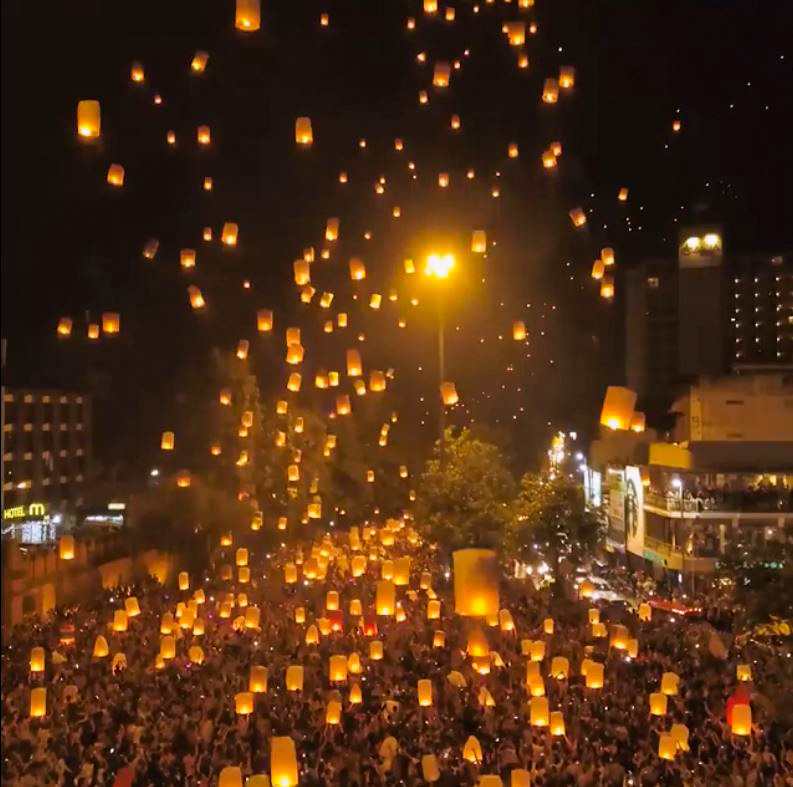
Tha Phae Gate is always the most happening place in Chiang Mai during the times of festivals, like the Loy Krathong and Yee Peng Lantern Festivals.
As the busiest and most bustling place in Chiang Mai, the areas surrounding Tha Phae Gate have always been a popular choice for tourist accommodation. There are a lot of hotel and guesthouses within walking distance from the gate, ranging from budget backpacker-style dorms to the well-known luxury 5-star resorts.
Other attractions close to Tha Phae Gate include the boxing stadium, bars, restaurants, cafes, the night bazaar, etc. Sunday evening is the busiest time here because Tha Phae Gate is the starting point of the extremely popular Chiang Mai Sunday Night Market Walking Street, which also known as Tha Phae Walking Street.
CHANG PHUAK GATE (North)

Chang Phuak Gate sometimes called the North Gate, is on the north side of the old city wall. In the daytime, the area is an ordinary street full of shops, (a lot of) backpacker hostels, restaurants and also several big ancient temples. It’s at night time though that the place really comes alive.
Chang Phuak Gate is most famous for its night market which opens every day in the evening from 5.00pm till midnight. Located right opposite the gate, the market is extremely lively at night with the locals and tourists enjoying their dinner and midnight supper.

Chang Phuak Gate Night Market is one of the best places for street food in Chiang Mai. Prices are incredibly cheap with most dishes around 40-50 Baht.

The North Gate Jazz Co-Op is a casual and friendly jazz bar that plays good live music in a great atmosphere.
Another popular attraction of Chang Phuak Gate is the Jazz bar i.e. The North Gate Jazz Co-Op. With only a few places to listen to Jazz in Chiang Mai, this small building just outside the Old City often gets packed, and with good reason. The live acts are always electric, pulling in return crowd of expats, locals and plenty of visitors to the ramshackle yet charming space.
CHIANG MAI GATE (South)

Chiang Mai Gate sometimes called the South Gate, is on the south end of the old city. Nothing really touristic here, except the markets. If you come as early as 6.00am, you will see some monks making their morning alms around and collecting food at the neighbourhood market.
In the evening, the streets outside the fresh market are transformed into a busy night market made up of almost 50 food stalls selling a different kind of local dishes. Try the grilled seafood here, which the stall often surrounded by a regular crowd and curious tourists.
The area surrounding Chiang Mai Gate is extremely busy at Saturday night because here is the starting point of Saturday Night Market (Wualai Walking Street). If you are coming on Saturday be prepared for the bigger crowd.

Chiang Mai Gate Night Market is a food market opens daily in the evening from 6.00pm till midnight.
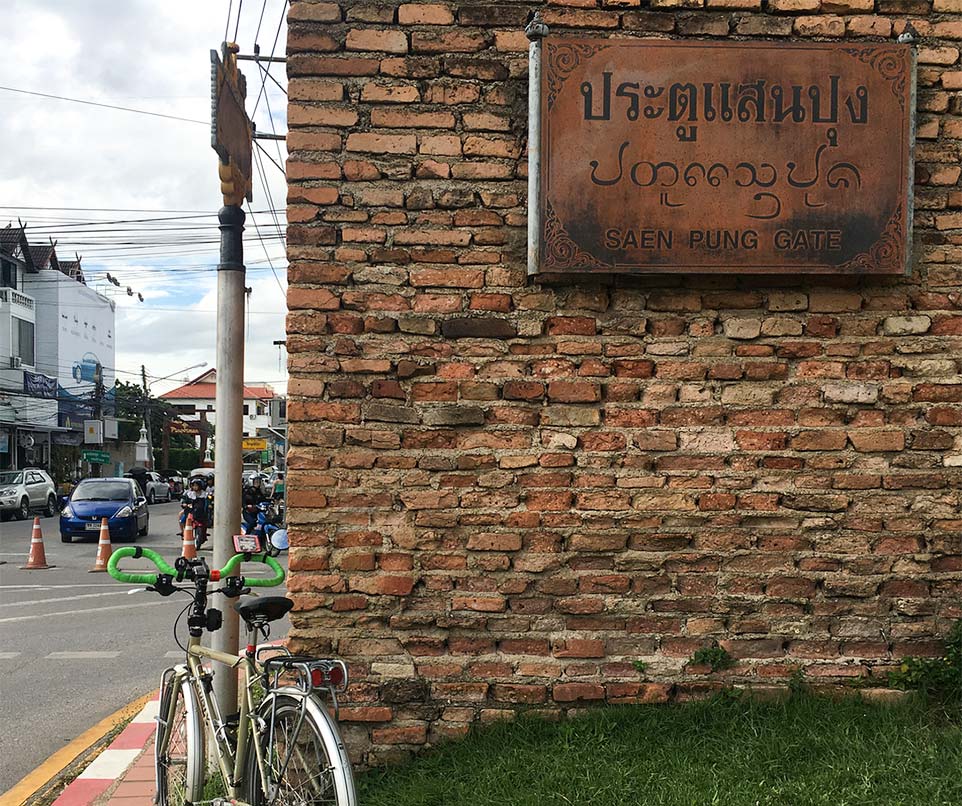
Saen Pung Gate in the southwest of the old city. Also known as Haiya Gate.
Unlike the other sides of the wall, the southern side of the old city has two gates. The lesser-known Saen Pung Gate is the other southern gate (southwest), sometimes called Haiya Gate, leading to Haiya subdistrict. The gate was not part of the initially built wall. It is a structure built around a century later by the queen at that time, Phra Rajathevee.
SUAN DOK GATE (East)

Suan Dok Gate is located on the west side of the old city wall. The gate is named after the nearby temple i.e Wat Suan Dok. Without many attractions near the gate, the surrounding area is not so touristy. Compared with the other sides of the wall, traffic here is moving much faster.

Suan Dok Gate was named after the nearby temple, Wat Suan Dok, which means “flower garden” in the Thai language.
The Four Corners (Jaeng)

Compared with the gates, the old city’s four corners (in Thai: Jaeng), each with historically designated name, are lesser-known to tourists: Jaeng Sri Phum in the northeast, Jaeng Katam in the southwest, Jaeng Gu Huang in the southwest, and Jaeng Huo Lin in the northwest.
The few remains of the walls at the four corners are not original. In the 90s archaeological excavations were made before the wall remains were refurbished using old bricks mixed with new brickwork to restore what remained of the walls. Unfortunately, the remains are just some low walls close to the corners of the old town. Today they serve a contemporary function as the city’s landscape and park.

Jaeng Sri Phum (in Thai, means “Light of the Land Corner”) at the northeast of the old city wall.
The Old City Today

Chiang Mai today is a city of art and culture and, for centuries, has remained the principal religious center in northern Thailand and focal point for the construction of temples and monasteries.
There are 40 ancient temples within the old city walls and over 80 officially registered religious sites in the metropolitan area.
Many temples stand in original condition, while others have been heavily restored and refurbished. Older temples have largely disappeared except for their crumbling stupas. The entire old city is about 1.7km square and can be covered by foot.
At every gate, corners, and at some temples, there is an information plaque giving some details and history about each place.

Wat Chedi Luang is a large ruined temple located in the heart of the old city area of Chiang Mai.
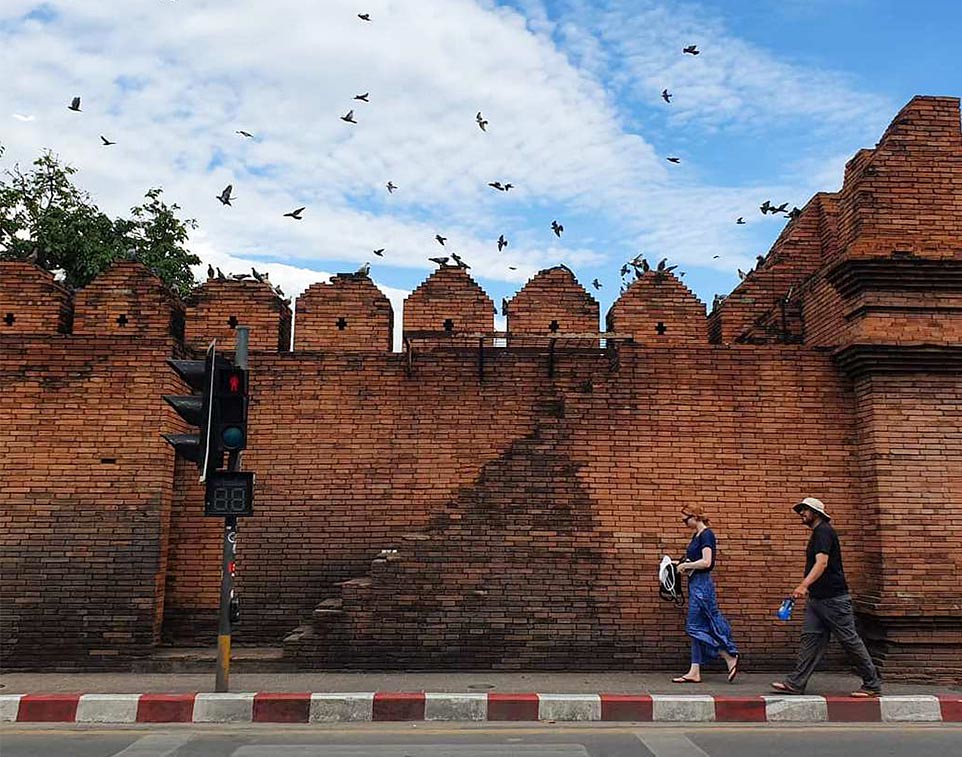
The mile-square old city is best to explore by foot, or bicycle.

Some parts of the crumbling walls and gates stand in original condition, while most others have been heavily restored and refurbished.

Tha Phae Gate
WHEN IN CHIANG MAI, YOU MAY ALSO LIKE:
BAN RAK THAI (MAE AW) The Most Beautiful Village in Thailand
THAILAND TALLEST MOUNTAIN Doi Inthanon National Park
MARKET MARKET GUIDE 17 Best Local Markets in Chiang Mai To Visit












